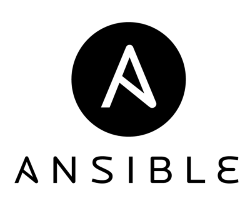 One of the blessings—and curses— of working at Red Hat is that you get to be around and hear about a lot of cool tech. This may not sound like much of a curse, until you realize that you are usually so busy doing what you are doing, there's rarely time to explore something new.
One of the blessings—and curses— of working at Red Hat is that you get to be around and hear about a lot of cool tech. This may not sound like much of a curse, until you realize that you are usually so busy doing what you are doing, there's rarely time to explore something new.
This can be exacerbated a little bit when you work remote, like I and many of my colleagues do. I have the good fortune of living in a small U.S. city, but one of the weird things about this location is no one rarely expects to meet someone from a large fairly well-known company who loves in their hometown.
The upshot of these encounters is that I usually get inundated with tech questions about which I may know little to nothing. Case in point: a couple of months ago I attended a hack-the-city meetup and when I introduced myself, I was immediately hit with questions about Ansible—one of those cool bits of tech I have been meaning to try.
Recovering is a little awkward, because some people don't realize how big Red Hat is and how many different upstream projects and commercial products we work with. So people can look at you funny when you say you work at Red Hat and then "but I don't know Ansible." (Or Openshift. Or Atomic...)
I mean, I know Greg and Robyn, the Ansible community managers, I will gamely reply. They're pretty cool...
But no, in a tech meetup you gotta have some tech cred, and my skillset in Fedora, oVirt, and git wasn't going to impress. Ansible was where all these cool kids were at.
Months later? Still haven't really learned Ansible. But I have been pleased to follow the Linux Journal series from my long-time colleague Shawn Powers, who has detailed some of the basics in a (thus far) three-part set of articles on Ansible:
- Ansible: the Automation Framework That Thinks Like a Sysadmin
- Ansible: Making Things Happen
- Ansible, Part III: Playbooks
And, of course, there's always the excellent Ansible documentation.
But beyond the constraints of time, there is also the very real issue of motivation. I am not a developer, nor am I sysadmining more than two or three virtual machines at any given time. For all the great tech out there, if there's no need for me to use it, then the FOMO is not really legitimate. For a long time, I wanted to learn git and never could find the time. Now, because I use it to manage website content, I'm getting pretty good at it.
For now, it's nice to be able to know something like Ansible is there for people who need it. Or Openshift. Or Atomic. That's one of the best parts of open source: software never truly goes away. I'll learn how to use Ansible someday.
When there's a need.
Über den Autor
Brian Proffitt is Senior Manager, Community Outreach within Red Hat's Open Source Program Office, focusing on enablement, community metrics and foundation and trade organization relationships. Brian's experience with community management includes knowledge of community onboarding, community health and business alignment. Prior to joining Red Hat in 2013, he was a technology journalist with a focus on Linux and open source, and the author of 22 consumer technology books.
Nach Thema durchsuchen
Automatisierung
Erfahren Sie das Neueste von der Automatisierungsplattform, die Technologien, Teams und Umgebungen verbindet
Künstliche Intelligenz
Erfahren Sie das Neueste von den Plattformen, die es Kunden ermöglichen, KI-Workloads beliebig auszuführen
Cloud Services
Mehr erfahren über Managed Cloud Services
Sicherheit
Erfahren Sie, wie wir Risiken in verschiedenen Umgebungen und Technologien reduzieren
Edge Computing
Erfahren Sie das Neueste von den Plattformen, die die Operations am Edge vereinfachen
Infrastruktur
Erfahren Sie das Neueste von der weltweit führenden Linux-Plattform für Unternehmen
Anwendungen
Entdecken Sie unsere Lösungen für komplexe Anwendungsherausforderungen
Original Shows
Interessantes von den Experten, die die Technologien in Unternehmen mitgestalten
Produkte
- Red Hat Enterprise Linux
- Red Hat OpenShift
- Red Hat Ansible Automation Platform
- Cloud-Services
- Alle Produkte anzeigen
Tools
- Training & Zertifizierung
- Eigenes Konto
- Für Entwickler
- Kundensupport
- Mehrwert von Red Hat berechnen
- Red Hat Ecosystem Catalog
- Partner finden
Testen, kaufen und verkaufen
Kommunizieren
Über Red Hat
Als weltweit größter Anbieter von Open-Source-Software-Lösungen für Unternehmen stellen wir Linux-, Cloud-, Container- und Kubernetes-Technologien bereit. Wir bieten robuste Lösungen, die es Unternehmen erleichtern, plattform- und umgebungsübergreifend zu arbeiten – vom Rechenzentrum bis zum Netzwerkrand.
Wählen Sie eine Sprache
Red Hat legal and privacy links
- Über Red Hat
- Jobs bei Red Hat
- Veranstaltungen
- Standorte
- Red Hat kontaktieren
- Red Hat Blog
- Diversität, Gleichberechtigung und Inklusion
- Cool Stuff Store
- Red Hat Summit

